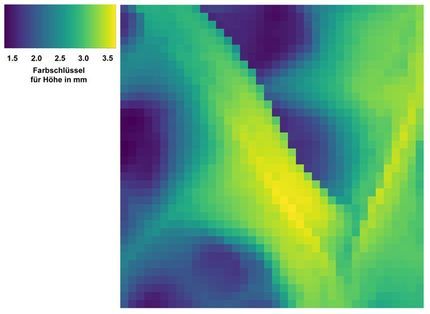Researchers discover new sex pheromone in fruit flies
Female fruit flies are highly attractive to the males - as long as they are virginal. After mating, however, males are less willing to copulate with the females for many days. A team of researchers from the University of Münster and Harvard Medical School in the USA have now discovered a substance that triggers this behaviour of avoiding the females. This pheromone (a chemical messenger that influences behaviour) is transferred from the male to the female during copulation and ensures that after successful copulation, the female is much less attractive to other males.
For chemical communication, insects use special hydrocarbon compounds that are presented on the surface of their body. These chemical messages are picked up by other insects through their sense of smell or are "tasted" via contact receptors on their legs - the same way that, for example, a human being tastes food using receptors on the tongue. An especially important role is played by the so-called sex pheromones that trigger or inhibit the sex drive. Although these messengers and their influence on mating behaviour in fruit flies have already been well examined, the chemical data have not, so far, been able to explain why male fruit flies avoid the females for days after copulation.
The prediction that there were other as yet unidentified messengers have now been confirmed by the results of the German-American team's work. Using modern mass spectrometry, the researchers were able to prove the existence of a large number of new compounds on the surface of fruit flies' bodies. The structures of these substances are characterised by a long hydrocarbon chain and one or more oxygen atoms. Both of these features make them less volatile and, as a result, less easily detected by the method of analysis mostly used so far: gas chromotography.
Using a technique developed at the University of Münster, whole insects were placed directly into a time-of-flight mass spectrometer. A fine beam of an ultraviolet laser scans the flies and evaporates the messengers from the surface of their bodies. In this process, some of the molecules that are detached are, at the same time, ionised - i.e. they are charged. As a result, these molecules can be manipulated with electric fields and the mass specific to each molecule can be measured in the mass spectrometer. In this way, the scientists can identify the substances.
One particular hydrocarbon compound is found in high concentration on the surface of male fruit flies' sex organs. This observation led the researchers to scrutinize the substance - called CH503 -more closely. The experiments concluded that CH503 is indeed transferred from the male to the female fruit fly during mating and its existence on the female can be demonstrated at least ten days later.
In a series of behavioural experiments, it was also shown that CH5O3 acts as a pheromone and actually discourages male fruit flies from mating. Virgin females that are normally highly attractive to males lose their allure when perfumed with CH503. "Our results were able to clarify a question relating to behavioural biology that had so far been unanswered," say the two main authors of the study, Dr. Joanne Yew from the Harvard Medical School and Dr. Klaus Dreisewerd from the Institute of Medical Physics and Biophysics at the University of Münster. "And that was: why are female fruit flies avoided for so long by possible mating partners after they copulated?"
Scientists suspect that avoiding a string of matings has benefits for fruit flies. The genetic investment of the males are transferred to the female unhindered and are not ousted by rivals, and the females do not waste any energy on unnecessary mating, but can rather busy themselves with looking for a suitable place to lay their eggs.
Original publication: Yew J.Y. et al.; "A New Male Sex Pheromone and Novel Cuticular Cues for Chemical Communication in Drosophila"; Current Biology Online 2009
Other news from the department science
These products might interest you
Most read news
More news from our other portals
See the theme worlds for related content
Topic World Mass Spectrometry
Mass spectrometry enables us to detect and identify molecules and reveal their structure. Whether in chemistry, biochemistry or forensics - mass spectrometry opens up unexpected insights into the composition of our world. Immerse yourself in the fascinating world of mass spectrometry!

Topic World Mass Spectrometry
Mass spectrometry enables us to detect and identify molecules and reveal their structure. Whether in chemistry, biochemistry or forensics - mass spectrometry opens up unexpected insights into the composition of our world. Immerse yourself in the fascinating world of mass spectrometry!
























































